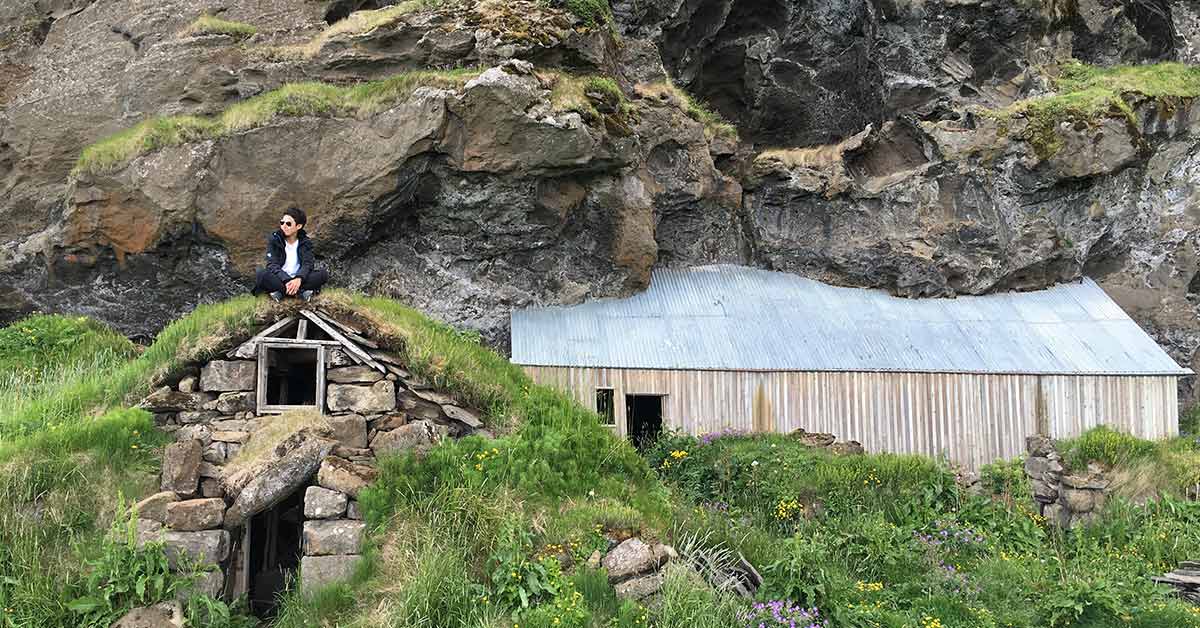Long have we credited Christopher Columbus for “discovering” the Americas. New research, however, suggests that Vikings arrived centuries before the Italian explorer ever set foot on these shores. The tip-off came from an archeological discovery in Newfoundland, Canada. (1)
Vikings Arrived In North America Long Before Christopher Columbus
Nearly 500 years before Columbus made the trip across the Atlantic Ocean, it appears that the Vikings beat him to it. There is a historic Viking settlement on the most northern tip of Newfoundland, called L’Anse aux Meadows. Archeologists have been studying it since the 1960s, but they could never nail down a date for roughly how old it is.
Recently, however, archaeologist Michael Dee from the University of Groningen in The Netherlands and his team have made progress that divulges this information. According to their research, Vikings were active on the site in 1021 CE – which is 1000 years ago. This is long before Columbus, who arrived in North America in 1492 CE.
To anyone who enjoys history or ancient civilizations, this won’t come as a surprise. Vikings were highly capable sailors and explorers. They were the first to reach many far-flung places. The fact that these hearty, strong people crossed the Atlantic 500 years before anyone else isn’t really shocking – but it is a pretty cool discovery, nonetheless.

Read: Perfectly preserved ancient Roman mosaic floor discovered in Italy
How They Finally Dated The Site
As already mentioned, archeologists have been trying to nail down a date for that site for half a century already. So what was it that gave Dee and his team the leg up? How did they finally nail down this elusive date?
“Well, in order to date archaeological sites one needs either contemporary written records or a considerable number of artifacts that can be placed within a certain time range. L’anse aux Meadows did not yield either of these things. The best scientific dating method is probably radiocarbon dating but it tends only to be able to provide dates to the nearest few centuries,” explained Dee. (2)
The method that Dee and his team used is relatively new. It has only been available within the last few years. They analyzed three pieces of wood from the site. Each type of wood came from different trees. The pieces were leftover from the Vikings’ wood chopping activities. The archaeologists know this because of the markings in the wood, made by distinctive tools that the indigenous did not use.
Next, they used distinctive features of the atmospheric carbon record to constrain the radiocarbon dating of the wood. A massive solar storm that took place in 993 CE left a distinct radiocarbon signature in the rings on the wood, which is why it is possible to estimate so accurately what time frame the wood is from.
“By measuring the radiocarbon concentration of the tree rings in the Viking wood, we were able to find this same spike,” said Dee. “it was just a case of counting the rings to the bark edge to work out when the last ring was laid down,”
This meant that the ring originated in 993 CE. After using this on all three types of wood, each one had a cutting date of 1021 CE.
“Our new date lays down a marker for European [awareness] of the Americas, and represents the first known point at which humans encircled the globe,” they wrote in their study.
The Vikings Didn’t Live There
The scientists don’t believe, however, that the Norse actually lived there. They assume they were likely there looking for resources such as timber to bring back to Greenland. They are able to guess this based on certain clues. For example, there are no burial sites around the settlement. This makes them think that the Viking’s stay there was likely quite temporary. It is unclear how many times they may have visited though before others from continental Europe arrived. Now, they are looking for exotic plants that can give them further clues to where else in North America the Vikings may have explored.
Keep Reading: Girl, 8, pulled a 1500-year-old sword from a lake in Sweden

